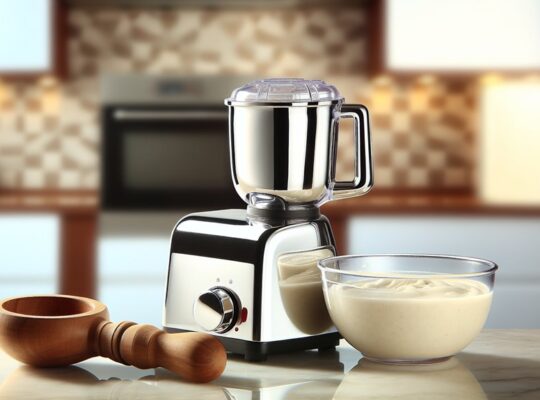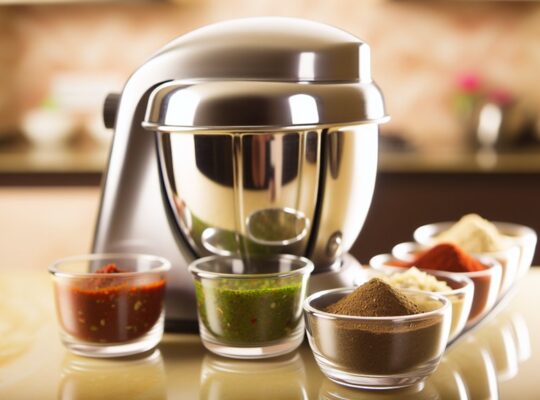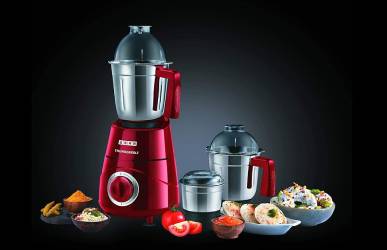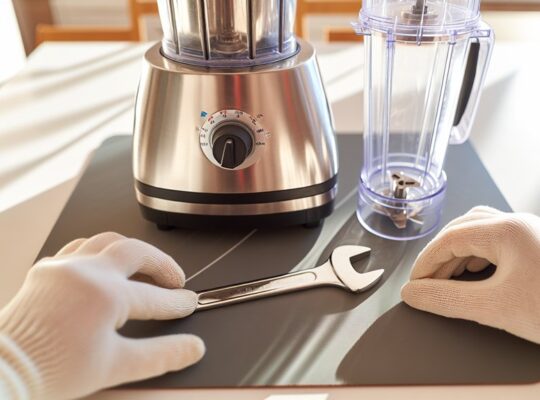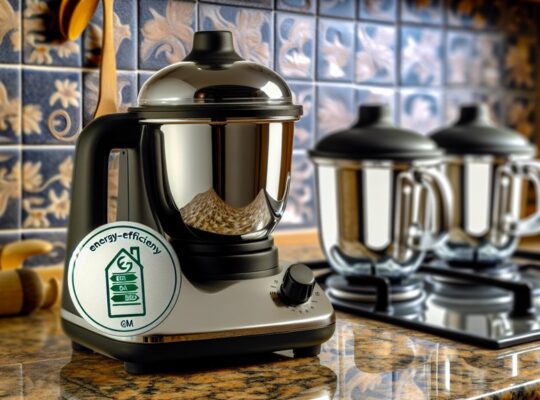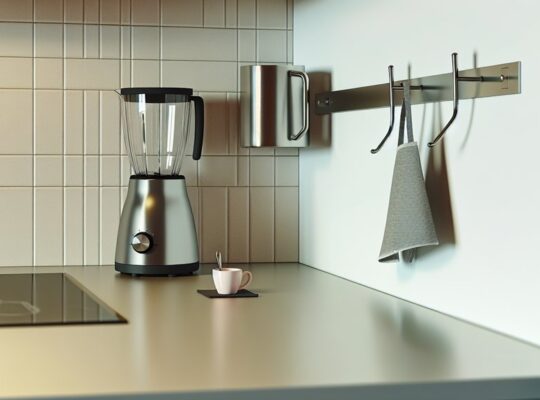You stand at the counter, the zest of limes bright on your fingers and the scent of fresh herbs curling in the air as you gather fruit, vinegar, and spice. The mixer grinder hums to life, blades catching the glow of chopped ingredients, a ribbon of steam rising from the bowl. You pulse, pause, taste, adjusting with salt and sugar until balance hits just right, and the chutney thickens to a glossy, inviting sheen. There’s more to coax from this blend—a final touch waits.
Key Takeaways
- Gather ripe fruits/veg, tangy vinegar or lemon, sugar, salt, and aromatics; wash, trim, and pat dry before prep.
- Choose a smooth base like tomatoes, onion, or peeled mango for easier blending and texture control.
- Pulse in short bursts, scraping sides, gradually add liquids, and stop when silky and uniform.
- Toast optional spices (cumin, mustard seeds) for aroma, adjust heat with chilies, then taste and fine-tune salt.
- Store in airtight containers, refrigerate promptly, label with date, and reheat in short bursts if needed.
Quick Start: Gather Ingredients and Tools
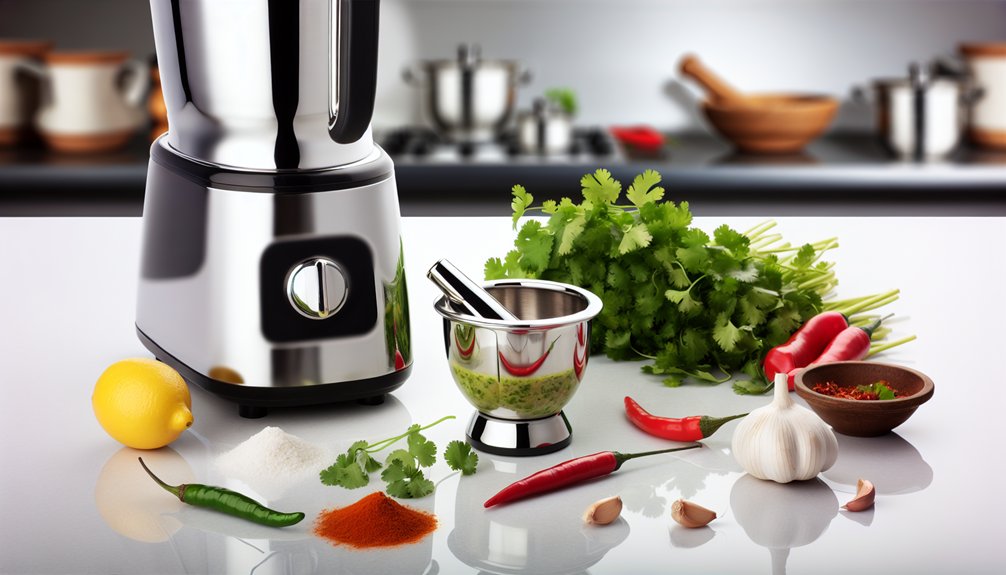
To start, gather ripe fruits or vegetables, tangy vinegar, sugar, salt, and a few aromatics like onions, garlic, or ginger; a clean cutting board and a sharp knife keep prep smooth. You’ll also want a reliable mixer grinder, a spatula, measuring spoons, and a clean bowl for initial washing and draining. Inspect produce for bruises, wash thoroughly, and pat dry to prevent splatter. Have calibration markers handy to guide sugar and salt levels, and keep a damp towel nearby to wipe spills as you work. Set up a stable workspace away from heat and moisture, and unplug the grinder before loading. Label ingredients if you batch multiple styles. Safety first helps you start confidently, avoiding slips and cuts while you prepare your chutney base. Power wattage and motor speed can influence how smoothly your chutney blends and how quickly you achieve the desired texture.
Choosing the Right Chutney Base
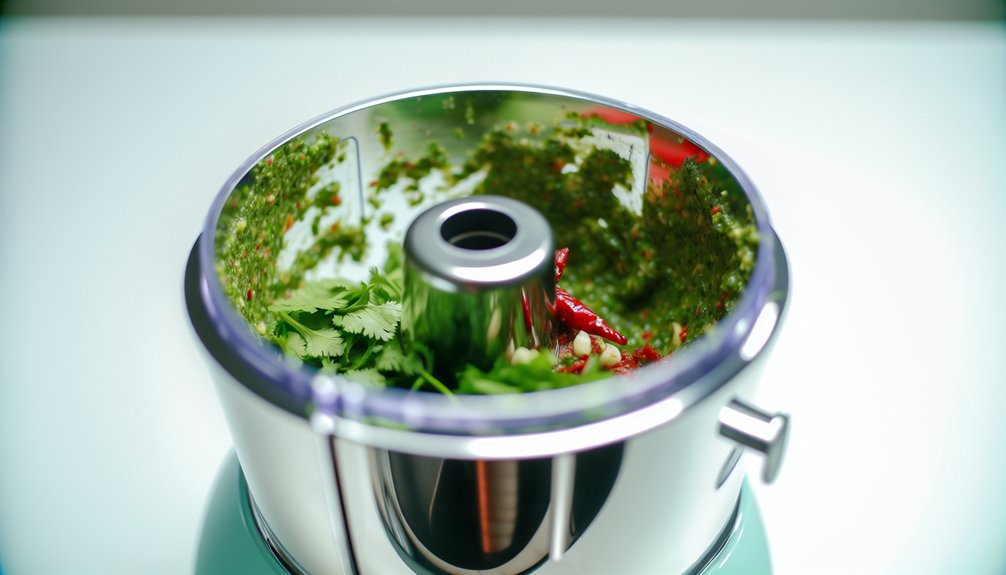
Choosing the right chutney base is about finding a balance that carries the flavors you’ll build on. You want a foundation that blends smoothly with future additions, not overpowering them. Start with a neutral, safe base like ripe tomatoes, onion, or peeled mango, chosen for their clean, predictable textures. Consider acidity and sweetness—a touch of lemon juice or tamarind can brighten without burning or souring. Texture matters: thicker bases cling to spices, while lighter bases let herbs shine. Wash ingredients thoroughly and trim blemishes to prevent off-notes. If you’re using garlic or ginger, measure for safety and avoid overpowering aromas that could irritate the palate. Always taste in small increments, stopping before flavors clash. Store prepared base chilled, covered, and labeled. The 400 Watts motor and three jars in a mixer grinder under 2500 can help you blend and test these bases efficiently jars and motor specs.
Step-by-Step Blending for Smooth Texture
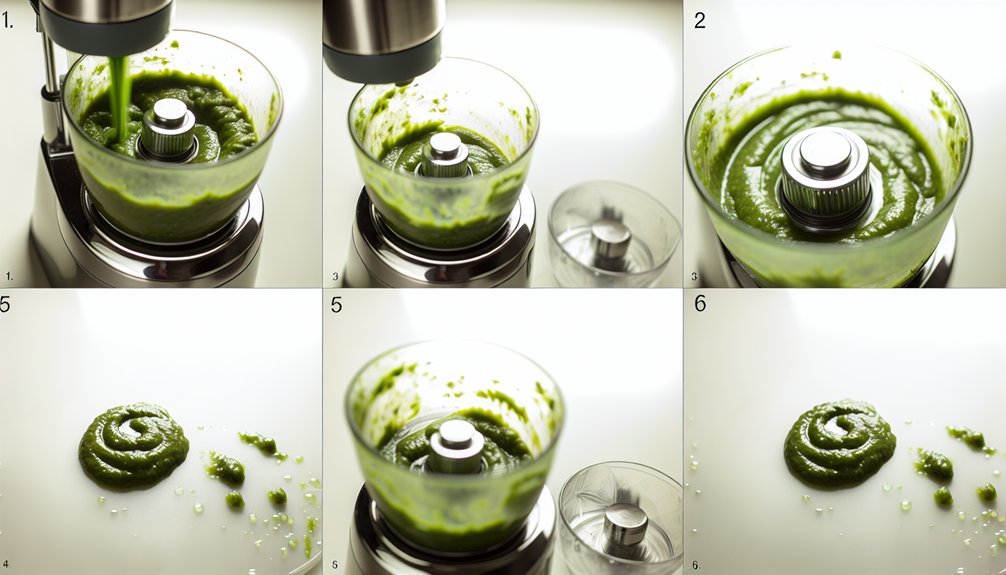
Blending to a smooth texture starts with a confident rhythm: pulse gently at first, then build to a steady, steady swirl. You start with small bursts,观察ing the fruits and spices soften. Hear the quiet hum of the mixer, feel the base thickening as air is forced out. Add liquids gradually; measure with care to avoid splatter. Pause between pulses to check texture, not just speed. If you hear grainy bits, pause, scrape the sides, then resume at a lower setting. Maintain firm, steady control, keeping fingers clear of the blade guard. Use short bursts, not long runs, to prevent overheating. Stop as soon as you reach a silky, uniform mass. Transfer safely, wipe the jar’s rim, and taste mindfully. Regular motor overload protection helps preserve performance during extended blending sessions 500W motor.
Tips for Freshness and Flavor Boosts
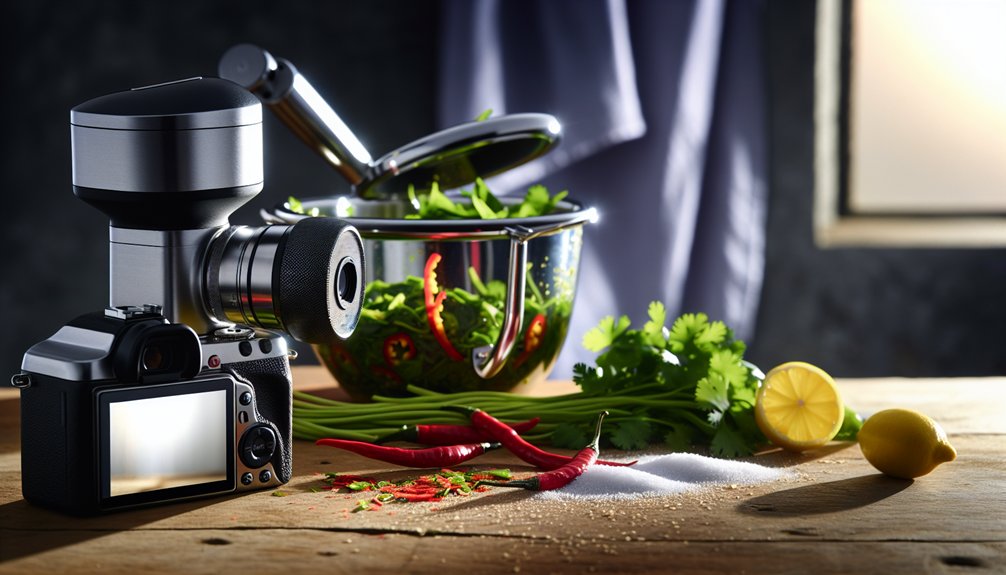
Fresh chutney, when bright and lively, hinges on smart freshness tactics and a few flavor-boosting touches. You’ll get peak color and aroma by using fresh ingredients, rinsed thoroughly, and chopped evenly so the mixer grinds safely and consistently. Brighten the blend with zesty citrus or a splash of vinegar, then add salt gradually to avoid overpowering the primary flavors. Toasted spices—cumin, mustard seeds, or coriander—lift the aroma without masking the base notes; crush them finely to avoid gritty texture. Quick acidity helps preserve hue and tang, but don’t rush refrigeration. Taste in clean bowls, using a sanitized spoon, and adjust heat with fresh chilies or a dash of black pepper. Always discard any off-smell portions and keep your workspace dry and hygienic. Regularly inspect your mixer grinder’s copper motor components and jar integrity for long-term performance motor longevity and safe grinding.
Storage, Reheating, and Clean-Up Tricks
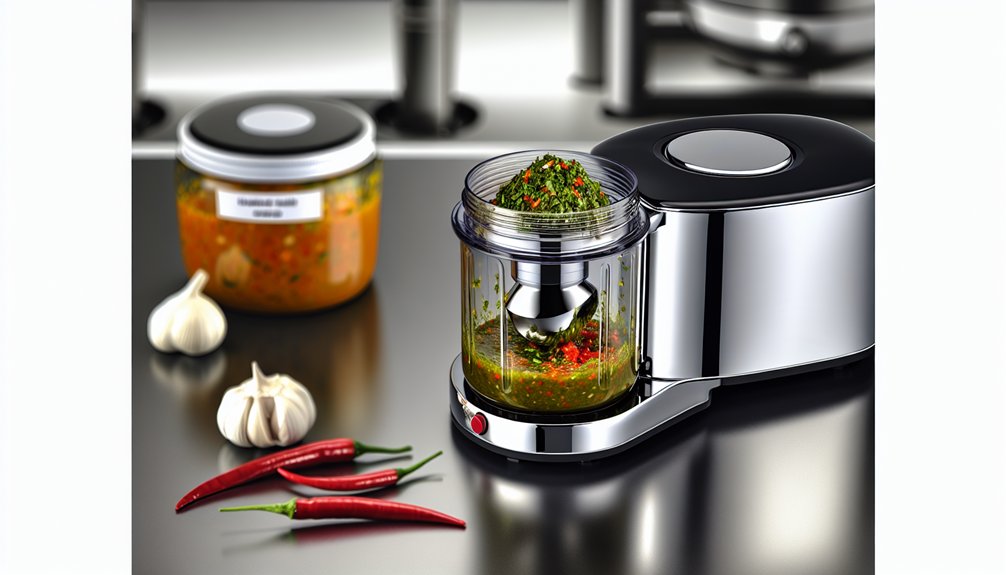
To keep chutney bright and safe, start with clean, airtight containers and cool, dry storage—refrigerate promptly after mixing, and label each batch with date and contents. When reheating, do it gently in short bursts, stirring between intervals to prevent scorching and preserve aroma. Clean-up should be swift, so wipe spills immediately and rinse tools with warm, soapy water. Here are practical steps to follow:
- Transfer leftovers to a labeled, airtight jar and refrigerate within two hours.
- Reheat only what you’ll eat, at low to medium heat, stirring until steaming.
- Use a soft brush to clean the grinder’s blades and lid; avoid abrasive scrubbers.
- Dry all parts completely before reassembly to prevent mold or yeast growth.
Frequently Asked Questions
Is a Mixer Grinder Suitable for Hot Chutneys Straight Away?
Yes, a mixer grinder isn’t ideal for hot chutneys; wait until it cools slightly, or use a heat-safe, short pulse. You’ll sense steam, avoid splatter, and protect sensors, wiring, and your skin from burns.
Can I Grind Chutney Without Water and Adjust Consistency Later?
Yes, you can grind chutney without water, but pause if texture seems stiff; add small splashes later to reach desired consistency, while guarding blades, cool surfaces, and airflow—safety first, then taste, aroma, and patience.
Which Blades Are Best for Coarse Versus Smooth Textures?
The thick, coarse texture comes from a rough-cut blade, while a smooth finish needs a fine, micro-serrated option. For safety, keep teeth guarded, pulse in short bursts, and scrape sides to prevent overheating and splatter.
How Do I Prevent Chutney From Turning Brown After Blending?
To prevent browning, you quickly squeeze a splash of lemon juice or toss in a pinch of salt, then blend in a cool, shaded space; keep blades clean, cover chopped herbs, and store airtight to preserve brightness.
Can I Freeze Chutney in the Blender Jar for Later Use?
Yes, you can freeze chutney in the blender jar, but leave headspace, cool quickly, and store airtight. Thaw safely in the fridge, give it a stir, and reheat gently to avoid texture and flavor loss.
